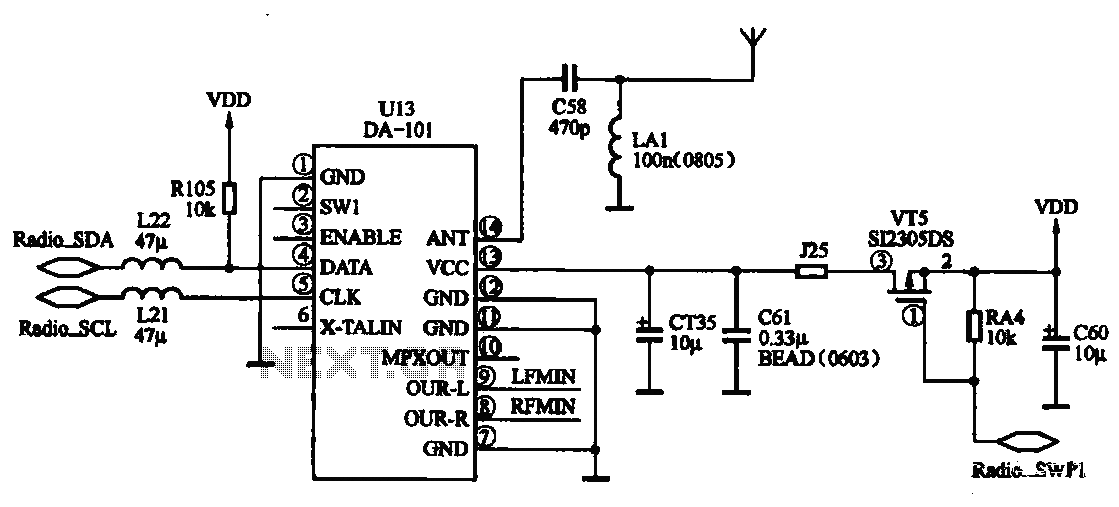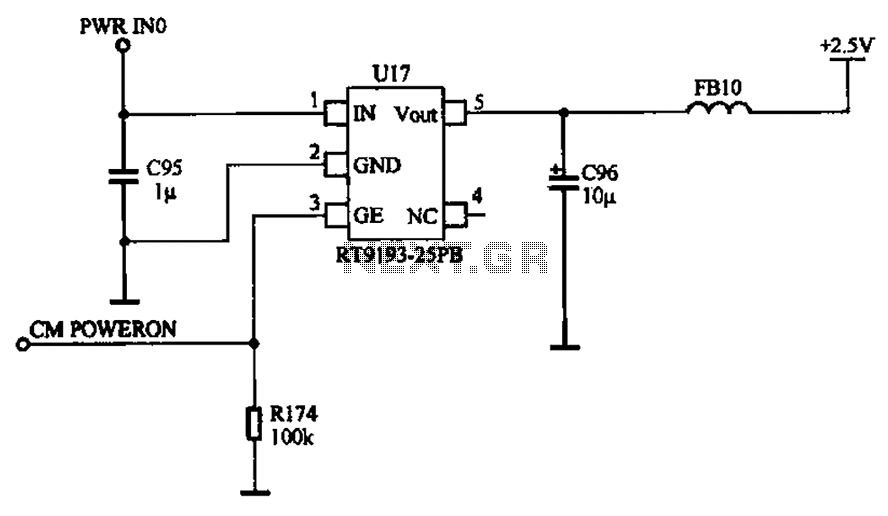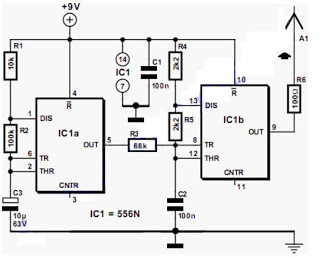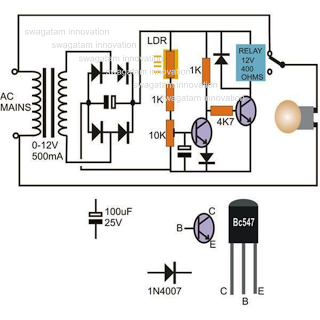
DA-101 FM radio circuit chip

FM radio chip circuits operate differently, as illustrated by the DA-101 chip FM radio circuit. In this configuration, the FM radio broadcast program is received through the headset jack, which functions as an antenna. The signal captured by the antenna is coupled through capacitor C58 into pin U13. This signal represents the radio frequency carrier. U13 performs high-frequency amplification, mixing, intermediate frequency (IF) amplification, and other processing to extract the audio signal, which is then output from pin U13. This audio signal is subsequently sent to a digital decoder chip for further processing. The radio circuit U13 is controlled by a CPU via the I2C bus, which applies control signals (DATA, CLK) to the respective pins of U13. Additionally, the power supply control signal for U13 is managed by the CPU, which sends a control signal to gate VT5. VT5, in turn, regulates the power supply to U13, ensuring effective control of the radio circuit.
FM radio chip circuits, such as the one utilizing the DA-101 chip, are designed to receive and process FM radio signals effectively. The circuit operates by using a headset jack as an antenna, allowing for the capture of FM broadcasts. The initial signal captured is passed through coupling capacitor C58, which serves to filter and couple the radio frequency signal into the U13 chip.
Once the signal reaches U13, it undergoes several stages of processing. The first stage is high-frequency amplification, which boosts the strength of the received signal to ensure adequate processing. Following this, the signal is mixed, which involves combining it with a local oscillator frequency to convert it to an intermediate frequency (IF). This IF signal is then amplified further to improve clarity and reduce noise.
The output from pin U13 is the audio signal that has been demodulated from the original radio frequency carrier. This audio signal is directed to a digital decoder chip, which translates the audio data into a format suitable for playback or further processing. This integration of digital decoding allows for enhanced audio quality and compatibility with various playback devices.
Control of the radio circuit is managed by a CPU through the I2C bus interface. The CPU sends control signals, including data and clock signals, to the appropriate pins on U13 to facilitate operation. This digital communication allows for precise control over the radio's functions, such as tuning and volume adjustments.
Furthermore, the power management of the U13 chip is crucial for efficient operation. The CPU sends a control signal to gate VT5, which acts as a switch to manage the power supply to U13. By controlling VT5, the CPU can turn the power supply on or off, effectively managing the power consumption of the radio circuit and ensuring that it operates only when necessary. This design consideration enhances the overall efficiency and longevity of the FM radio circuit.Radio FM radio chip circuits use different, it works slightly different, as shown in the use of DA-101 chip FM Figure radio circuit. FM radio broadcast program in the state of the headset as an antenna jack FM radio circuit, the signal received by the antenna coupling capacitor c58 into the U13 @ feet. This signal is a radio frequency carrier. U13 carried out in high-frequency amplification, mixer, IF amplifier, frequency and other processing solutions to bring up the audio signal by , @ pin output, and then sent to a digital decoder chip for processing, radio circuit U13 k {JI as by CPU control, Izc bus control signal to the CPU (DATA, CLK) are applied to the U13 , feet.
Ul3 the radio power supply control signal is a control signal from the CPU applied to the gate VT5 by VT5 applied to the control power supply U13, so as to control the radio purposes.
FM radio chip circuits, such as the one utilizing the DA-101 chip, are designed to receive and process FM radio signals effectively. The circuit operates by using a headset jack as an antenna, allowing for the capture of FM broadcasts. The initial signal captured is passed through coupling capacitor C58, which serves to filter and couple the radio frequency signal into the U13 chip.
Once the signal reaches U13, it undergoes several stages of processing. The first stage is high-frequency amplification, which boosts the strength of the received signal to ensure adequate processing. Following this, the signal is mixed, which involves combining it with a local oscillator frequency to convert it to an intermediate frequency (IF). This IF signal is then amplified further to improve clarity and reduce noise.
The output from pin U13 is the audio signal that has been demodulated from the original radio frequency carrier. This audio signal is directed to a digital decoder chip, which translates the audio data into a format suitable for playback or further processing. This integration of digital decoding allows for enhanced audio quality and compatibility with various playback devices.
Control of the radio circuit is managed by a CPU through the I2C bus interface. The CPU sends control signals, including data and clock signals, to the appropriate pins on U13 to facilitate operation. This digital communication allows for precise control over the radio's functions, such as tuning and volume adjustments.
Furthermore, the power management of the U13 chip is crucial for efficient operation. The CPU sends a control signal to gate VT5, which acts as a switch to manage the power supply to U13. By controlling VT5, the CPU can turn the power supply on or off, effectively managing the power consumption of the radio circuit and ensuring that it operates only when necessary. This design consideration enhances the overall efficiency and longevity of the FM radio circuit.Radio FM radio chip circuits use different, it works slightly different, as shown in the use of DA-101 chip FM Figure radio circuit. FM radio broadcast program in the state of the headset as an antenna jack FM radio circuit, the signal received by the antenna coupling capacitor c58 into the U13 @ feet. This signal is a radio frequency carrier. U13 carried out in high-frequency amplification, mixer, IF amplifier, frequency and other processing solutions to bring up the audio signal by , @ pin output, and then sent to a digital decoder chip for processing, radio circuit U13 k {JI as by CPU control, Izc bus control signal to the CPU (DATA, CLK) are applied to the U13 , feet.
Ul3 the radio power supply control signal is a control signal from the CPU applied to the gate VT5 by VT5 applied to the control power supply U13, so as to control the radio purposes.





